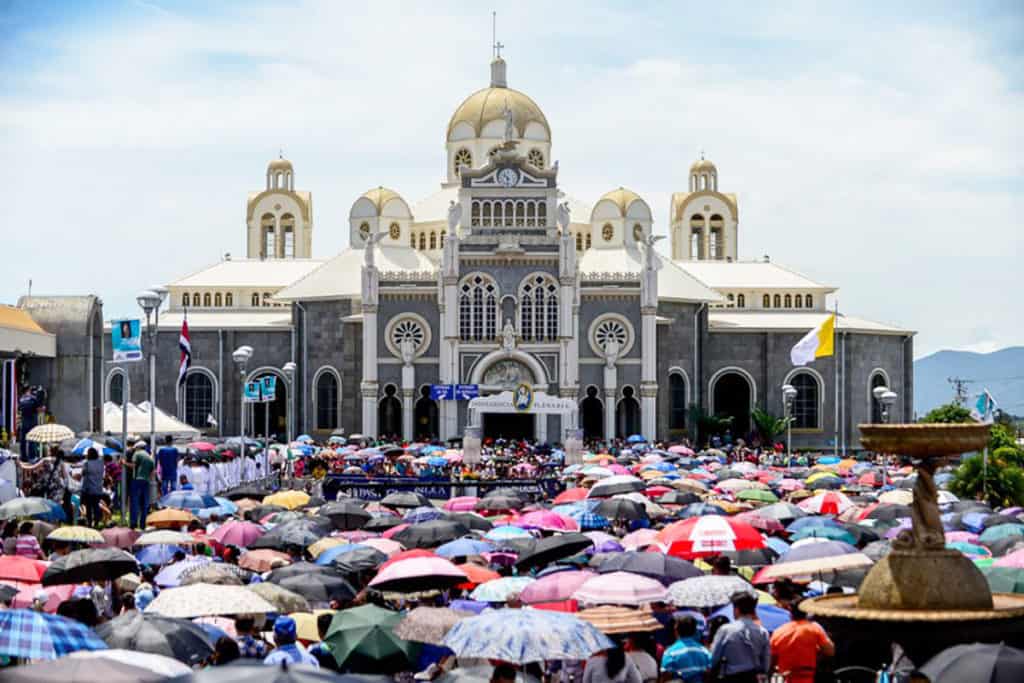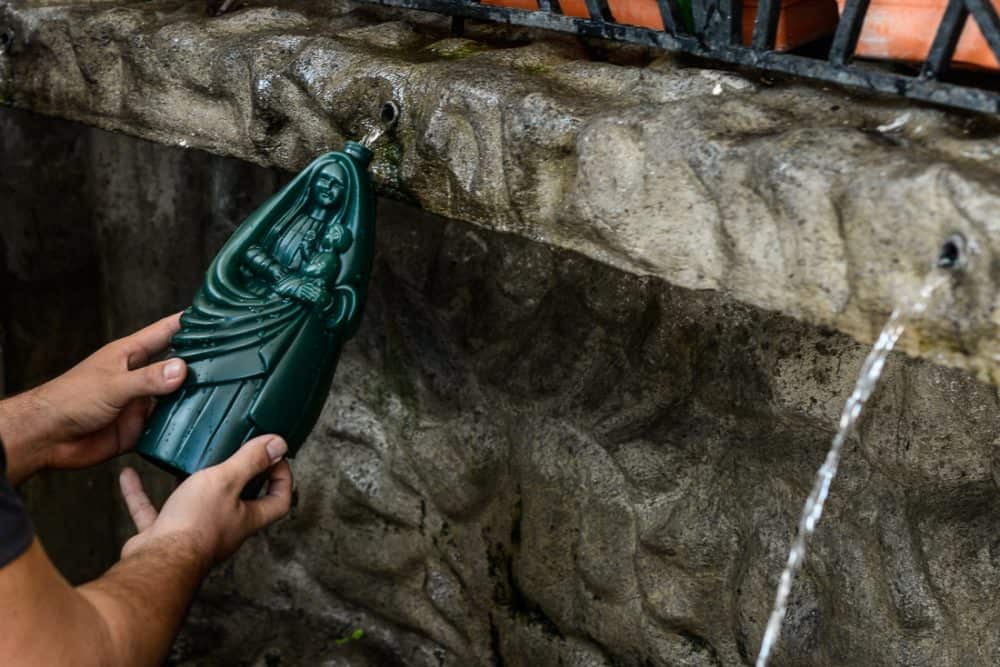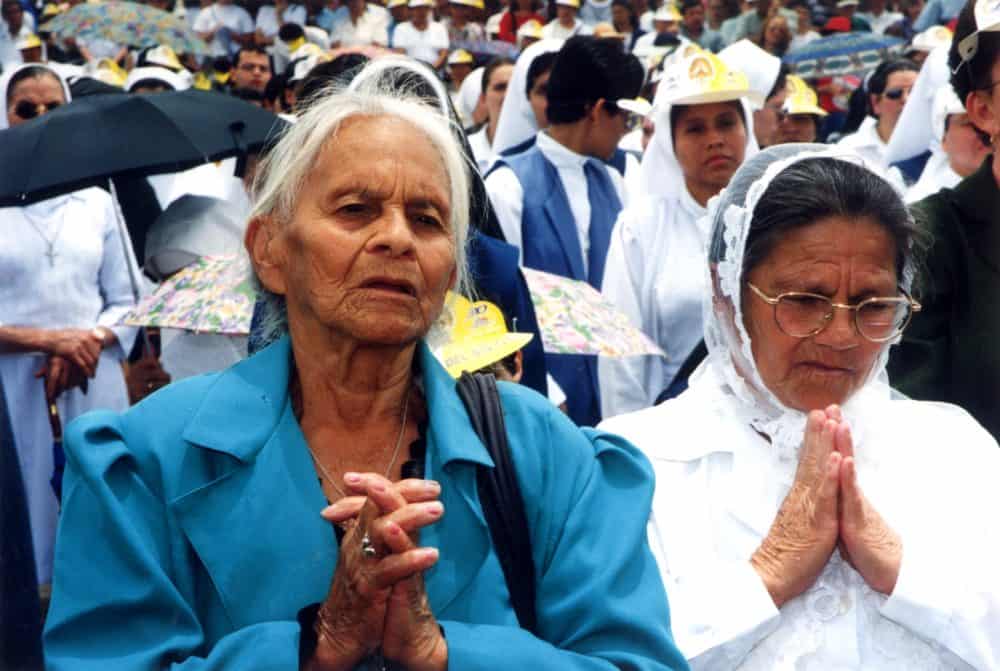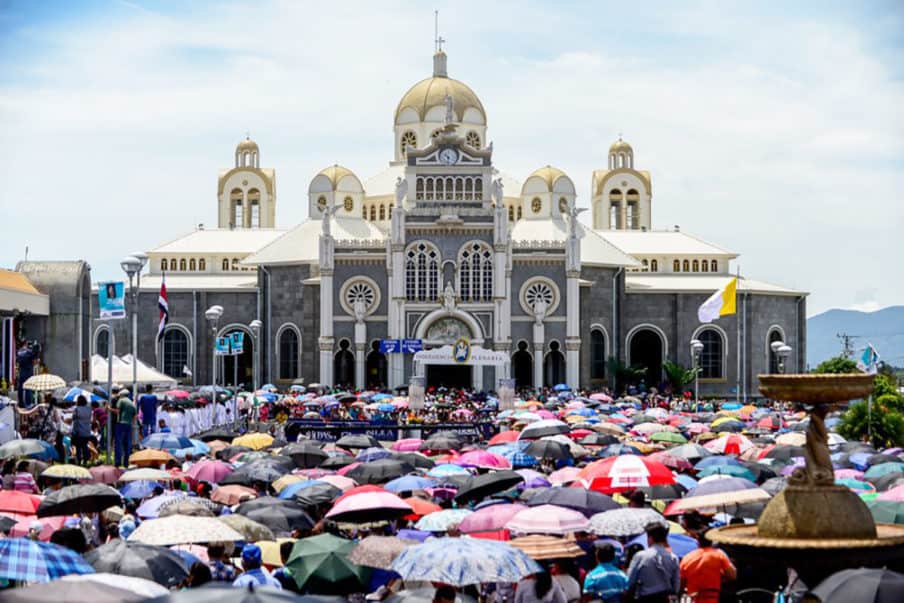
La Romería in Costa Rica, where the “Pura Vida” spirit is a part of daily life, few events capture the nation’s cultural and spiritual heartbeat like La Romería de La Virgen de los Ángeles. Held annually on August 2 in Cartago, this pilgrimage draws up to 2.5 million people—nearly half the country’s population—to honor La Negrita, Costa Rica’s beloved patron saint.
Devotees walk 22 kilometers, often kneeling for the final meters, to reach the Basílica de Nuestra Señora de los Ángeles, blending Catholic devotion with Tico traditions of community, resilience, and celebration. For travelers and culture enthusiasts, this event offers a vibrant window into Costa Rica’s soul, where faith, music, and togetherness thrive. Join us as we explore the history, cultural significance, and experience of this iconic Costa Rican tradition.
A Cultural Cornerstone: What is La Romería?

Deeply rooted in Costa Rica’s Catholic heritage, La Romería is a pilgrimage that embodies the nation’s values of faith and unity. Each year, participants journey to Cartago to venerate La Virgen de los Ángeles, a small, black statuette known as La Negrita for her dark hue. The 22-kilometer trek, often from San José, sees pilgrims walking, cycling, or even riding horse-drawn carts, with many crawling on their knees as a profound act of devotion. This tradition, born in 1635, reflects Costa Rica’s colonial Spanish influence and its enduring spiritual identity.
The pilgrimage culminates at the Basílica de Nuestra Señora de los Ángeles, where La Negrita rests on a golden platform. Pilgrims visit a nearby stream, believed to possess healing powers, to wash or collect water. Beyond the journey, the Day of the Virgin of the Angels sparks nationwide festivities, with marimba music, punto guanacasteco dances, and mascaradas (masked parades) showcasing Costa Rica’s vibrant cultural tapestry. These celebrations welcome everyone, from devout Catholics to curious tourists, fostering a sense of shared joy that’s quintessentially Tico.
When and Where to Experience This Cultural Event
La Romería takes place on August 2 in Cartago, commemorating the 1635 discovery of La Negrita. Preparations begin as early as July 23 with the novena, a nine-day prayer period, and pilgrims from distant regions like Guanacaste start walking by July 25.
A national holiday, the event rivals Christmas and Easter in scale, with a solemn mass on August 2 attended by the president and clergy, highlighting Costa Rica’s confessional state. The Pasada de La Negrita, a procession moving the statuette to Cartago’s cathedral for a month, extends the festivities, enriching the cultural experience.
| La Romería: Key Cultural Details | Information |
|---|---|
| Date | August 2, with novena from July 23 |
| Location | Basílica de Nuestra Señora de los Ángeles, Cartago |
| Distance | 22 km (typically San José to Cartago) |
| Participants | ~2–2.5 million (40–50% of Costa Rica’s population) |
| Cultural Highlights | Pilgrimage, mass, Pasada, marimba music, mascaradas |
The Cultural Legend of La Negrita

Costa Rica’s cultural identity is woven with stories of miracles, and none is more cherished than that of La Negrita. In 1635, Juana Pereira, a native woman, found a small, dark statuette of the Virgin Mary on a rock near a stream while gathering firewood.
Each time she took it home, it mysteriously returned to the rock, even after a priest secured it in the parish. This divine sign led the community to build a shrine, now the Basílica de Nuestra Señora de los Ángeles. Crafted from volcanic rock and jade, the 20-centimeter statuette depicts a dark-skinned Virgin with the Child Jesus, symbolizing inclusivity in Costa Rica’s diverse heritage.
Declared the nation’s patron saint in 1824 and canonized in 1926, La Negrita is a cultural icon, appearing on stamps and inspiring countless miracles. Pilgrims credit her with healings and blessings, making the Romería a journey of gratitude and hope that resonates across Tico society.
The Basílica: A Cultural and Architectural Gem
Erected in 1639, the Basílica de Nuestra Señora de los Ángeles stands as a testament to Costa Rica’s resilience. Damaged by earthquakes and Irazú Volcano eruptions, it was rebuilt in 1939 with neo-Byzantine architecture, earning National Architectural Heritage status in 1999. Its stained-glass windows and hand-carved altars dazzle visitors, while silver medallions—shaped like body parts—line its walls, left by devotees seeking La Negrita’s healing. Open year-round, the basilica is a cultural hub, but on August 2, it becomes a vibrant stage for Costa Rica’s spiritual and communal traditions.
Why La Romería Defines Costa Rican Culture
La Romería is more than a religious event—it’s a highlight of Costa Rica’s “Pura Vida” ideals, where community and kindness shine. Pilgrims walk for personal reasons: a mother prays for her child’s recovery, a student seeks academic success, or a family gives thanks.
The journey fosters camaraderie, with strangers sharing tamales, water, and stories under the Central Valley’s green mountains. Traditional foods like arroz con leche and chorreadas fuel the trek, while roadside vendors sell La Negrita replicas, blending commerce with culture.
Non-Catholics and tourists are welcomed, drawn by the event’s authenticity and the chance to witness Tico traditions like marimba bands and colorful mascaradas. The Romería strengthens national identity, transcending social divides, and was declared an event of national interest in 2024, with enhanced security and medical support. Its economic boost—supporting local hotels and markets—underscores its role in Costa Rica’s cultural fabric.
Adapting to Modern Times
The Romería has evolved with Costa Rica’s changing landscape. In 2020 and 2021, COVID-19 forced virtual pilgrimages, allowing global participation. The 2022 resumption saw record crowds, and 2024 introduced a Misa de Vestición, where La Negrita received a new gown, alongside a theological congress marking 200 years of patronage. These adaptations highlight Costa Rica’s ability to preserve tradition while embracing modernity, a hallmark of its cultural resilience.
How to Immerse Yourself in La Romería
Experiencing La Romería is a cultural adventure. The 22-kilometer walk, often starting at dawn on August 1, takes 5–8 hours. Wear comfortable shoes, breathable clothing, and bring water, snacks, and sunscreen. Roads close for safety, with police and Red Cross teams on hand. Some pilgrims walk barefoot or crawl, reflecting deep devotion—respect their space. If walking isn’t an option, attend the August 2 mass, join local festivals with cimarrona music, or visit the basilica later to see La Negrita and the sacred rock.
Book accommodations early, as Cartago fills quickly. Explore nearby cultural sites like the Ruins of Santiago Apóstol or Cartago’s markets for handmade crafts. Whether you’re a pilgrim or a visitor, La Romería invites you to connect with Costa Rica’s warm, faith-filled culture.
Final Thoughts
La Romería de La Virgen de los Ángeles is a vibrant expression of Costa Rica’s cultural and spiritual heritage, uniting millions in a journey of faith and community. On August 2, Cartago transforms into a celebration of La Negrita, where Tico traditions—marimba, mascaradas, and shared meals—shine. For those looking for authentic Costa Rican experiences, this pilgrimage offers an unforgettable blend of devotion and “Pura Vida” joy. Plan your visit to join this cultural spectacle and discover why La Virgen de los Ángeles holds a honored place in Costa Rica’s heart.

